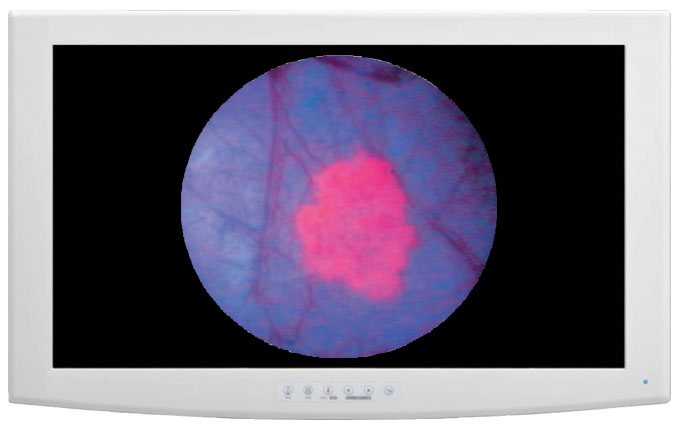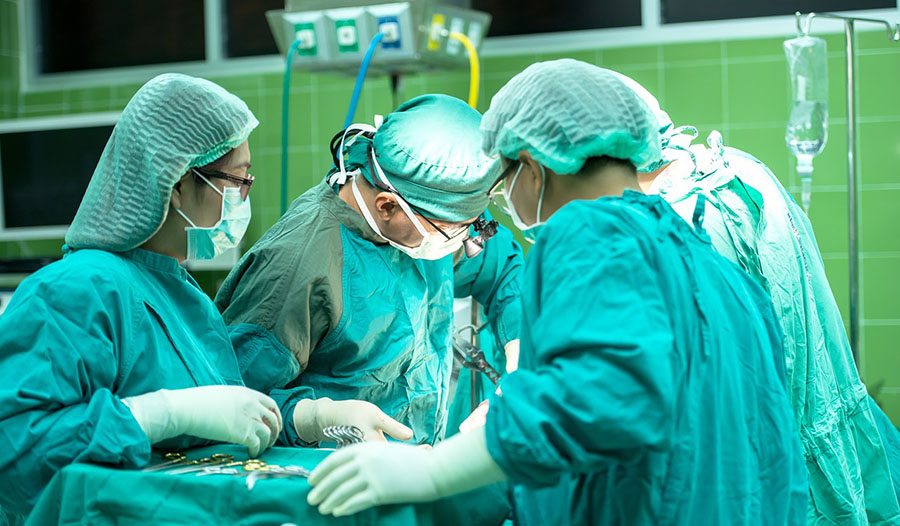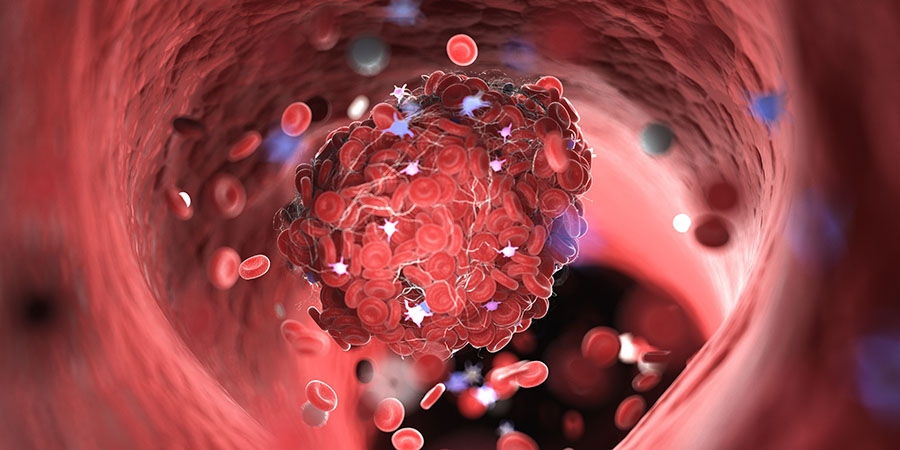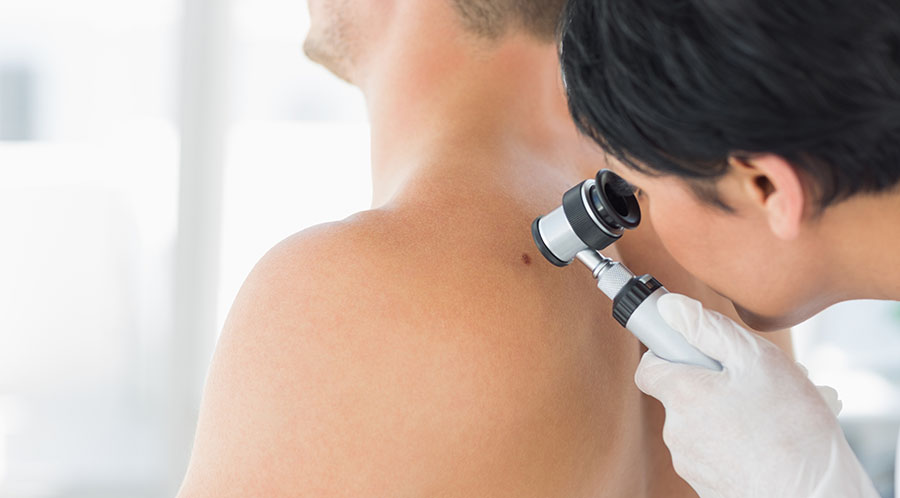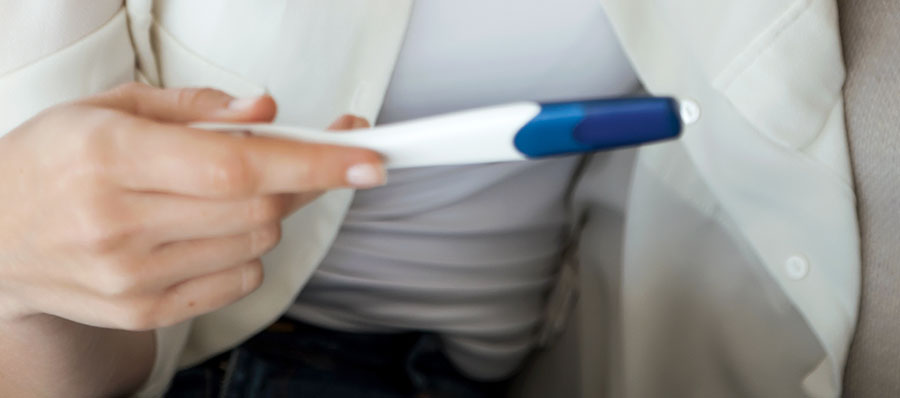TICKERS: BAX, BIO, HOLX, HSP, ISRG, MYGN, SQNM, VAR
Sharpen Your Medtech Investing Edge with Genomics, Imaging and Diversified Supplies: Junaid Husain
Interview
Source: George S. Mack of The Life Sciences Report (3/29/12)
 Medical supplies and diagnostics may not sound exciting, but recurring revenue is key to restful nights and steady growth. Dougherty & Company Vice President and Senior Medical Technology Analyst Junaid Husain has a rule-based approach for selecting winners. In this exclusive interview with The Life Sciences Report, he offers his best ideas and the logic behind them.
Medical supplies and diagnostics may not sound exciting, but recurring revenue is key to restful nights and steady growth. Dougherty & Company Vice President and Senior Medical Technology Analyst Junaid Husain has a rule-based approach for selecting winners. In this exclusive interview with The Life Sciences Report, he offers his best ideas and the logic behind them.
The Life Sciences Report: Junaid, I'm hearing a lot of general negativity on medical technology stocks. Analysts are complaining about slow approval times and additional data being required by the U.S. Food and Drug Administration (FDA). Many believe these factors have slowed innovation. With all of this somber talk, why would anyone invest in medtech now?
Junaid Husain: You hit on a few points that I hear over and over again when I talk to investors. The regulatory environment is tough. Reimbursement is tough. In 2013 we're going to be hit with a medical device tax. With all of the headwinds the industry is facing, where are those hidden jewels? Where is that diamond in the rough? At the end of the day, there are opportunities in medical technology investing. You just have to go out and find them.
TLSR: How do you go about finding them?
JH: I like companies that have a couple of different edges to them. I follow four rules when I consider medical technology companies:
Rule number one is that I look for an innovation story. Pipeline strength goes hand-in-hand with innovation. Does the company have technologies that are cutting edge? Does it have enabling technologies that help physicians in areas of medicine where there is a lot of unmet medical need? If you have a company with a strong pipeline that can address deficient areas of medicine, then I see this as a compelling investment opportunity.
Rule number two is that it should help hospitals save money. Can it provide technologies that can bend the cost curve? If a technology can save a hospital money, that's a win for both the company and for the hospital.
Rule number three is consideration of the company itself. Is there a gross margin story? If you can expand your gross margins, you will get upside in your numbers. Companies that can expand gross margins year-over-year are going to be winners because that has a material impact.
TLSR: Of course, expanding gross margins goes back to rule number one: innovation.
JH: Exactly. Can you innovate to create technologies with which you can maintain market dominance and competitive pricing while concomitantly reducing your cost of goods to expand margins?
Finally, rule number four is whether the company has strong hospital relationships. I can't emphasize this enough. Companies with the best hospital relationships, as well as those with group purchasing organizations (GPO) relationships, are the companies best positioned to win because it is all about product access. GPOs and hospitals are the gatekeepers for adoption. If a hospital or GPO doesn't want to take on your products, then you are in trouble.
Companies that can follow these four rules are the stories that are going to win.
TLSR: Along the line of strong hospital relationships, physician adoption is a big challenge. Are some companies better at getting doctors to adopt new technologies after they finish their residencies and fellowships?
JH: You raise a very interesting point: Physicians and hospitals, as institutions and purveyors of standard-of-care medicine, are animals of habit. As animals of habit, they do not like to change. They want to stick closely to the drug-eluting stent they've been trained to use or to the hip or knee they've used in thousands of other procedures before. Medical technology companies are very much in tune to this.
Consider for example, Intuitive Surgical Inc. (ISRG:NASDAQ). They are the industry leader in surgical robots. When they introduced the da Vinci System years ago, it got traction with urologists who were performing prostatectomy procedures. The interesting thing about the urology demographic was that we saw a lot of younger generation docs gravitate to the robot first. Tech-savvy docs who grew up with Playstations, the Internet, iPods, cell phones and the like would come out of medical school and begin residency training programs and/or fellowship programs in minimally invasive surgery hungry to learn the latest and greatest technologies. And Intuitive was only too happy to oblige these young kids. Through clever hospital marketing you got patients clamoring for these new technologies. Soon enough, the older surgeons started to feel a little ancient as they saw their patients gravitate to younger docs with cool gizmos. In an effort to keep up, the old-guard surgeons began to incorporate these new technologies into their practices. Bottom line: In 10 short years, Intuitive Surgical has transformed minimally invasive surgery with da Vinci—a technology that began as an esoteric device championed by the younger docs and is quickly becoming standard-of-care medicine.
TLSR: One of your major focuses is genomic and molecular biomarkers. Traditional diagnostics have had short shelf lives because of constant innovation and new competitors. Will these genomic-based technologies remain fresh longer than traditional diagnostics?
JH: That's an interesting question. I think the best way to answer it is that the velocity of innovation in general, whether it is in diagnostics or pharmaceuticals or medical supplies, has increased. Bringing that down to molecular diagnostics, I think the shelf life of any molecular diagnostic is getting shorter. Molecular diagnostic companies constantly need to refine and tinker with technologies to make them better. To that point, I follow Sequenom Inc. (SQNM:NASDAQ). It launched its diagnostic test MaterniT21 to detect Down syndrome (an extra chromosome 21, called trisomy 21 or T21) in mid-October 2011. It is a minimally invasive test in which you take a blood draw on the mom in the early first trimester and from the draw you can identify fetal nucleic acids that have crossed the placenta into the maternal blood circulation. Within two short months, the company had already made changes to the test: Not only can it identify trisomy 21, it can now identify trisomy 18 (Edwards syndrome) and trisomy 13 (Patau syndrome). I think that we're going to see further tweaks to this molecular diagnostic test. The key takeaway here is that companies have to constantly innovate to stay relevant to the healthcare audience and to stay ahead of the competition.
TLSR: You have Sequenom rated Buy with a $7 price target for an implied upside of about 75%. The stock is down about 14% over the past month. Is this a buying opportunity?
JH: Yes, I think it's a buying opportunity, especially at these levels.
TLSR: Start with the catalysts. What is going to move Sequenom?
JH: We're waiting to hear from the payers. Are the payers going to start lining up and put the test in their networks? As we go through the next one to two quarters, we're going to see payers include the T21 test in their formularies. That will be catalyst number one.
Catalyst number two is the adoption curve in general. When Sequenom reported on its most recent quarter a couple of weeks ago, it gave a preliminary read on MaterniT21 adoption at least for the first two months, and that was two to three months ahead of my expectations. Sequenom has targeted total testing volume of about 20,000 in 2012. I think that vastly under-represents what it can truly do. The total market for the T21 test in the country is five million (M) pregnancies. A portion of those are not going to do the test for religious reasons, but that still leaves a sizable number of patients who will be interested in getting their T21 status evaluated.
TLSR: You follow some medical suppliers, such as Baxter International Inc. (BAX:NYSE), ICU Medical, Inc. (ICUI:NASDAQ) and others. I realize you have a Hold rating on Baxter, but what general case do you make for investors owning suppliers?
JH: I like diversified medical supplies companies in general—companies like Baxter, ICU Medical, Johnson & Johnson (JNJ:NYSE), Abbott Laboratories (ABT:NYSE) and Teleflex Incorporated (TFX:NYSE). These are good, solid, well-run companies, and they have businesses that some might consider to be fairly boring, unsexy and commoditized. But sometimes boring is better because these are dependable businesses.
TLSR: The issue here is consumables and recurring revenue, correct?
JH: Correct. It is about consumables, recurring revenue and businesses that are recession-resistant because hospitals need the products in good times and bad.
TLSR: Your target is $53 on ICU Medical.
JH: I like ICU Medical. I've known these guys for the last eight years. It is a nice recession-resistant business that has been doing fairly well. It generates a ton of cash, about $15-20M/quarter in operating cash flows, because it has businesses with products that hospitals can't do without, such as connectors, tubing, critical care and oncology products. ICU Medical is levered to large distributors, one of which is Hospira Inc (HSP:NYSE), which accounts for somewhere between 35–40% of ICU Medical's total sales. So anytime Hospira sells an infusion pump, it also sells a contract for ICU Medical's products. It goes back to the whole recurring revenue stream. It's a nice business to have.
TLSR: Why are you neutral on Baxter?
JH: Baxter's business has two sides—a bioscience side and a medical products side. A lot of investors and my colleagues on the sell side love this stock because of the bioscience business, which has some of the best margins in the company overall and which investors see as a growth driver. My Hold rating is a contrarian call. In Q312 Baxter has to shut down and move a large manufacturing facility and assets in Los Angeles to another facility. The move is for its bioscience/intravenous immunoglobulin (IVIG) business. When you tinker with plasma production, it's just not easy to turn manufacturing off and then turn it back on again. Plasma manufacturing at Baxter is fully-integrated—Baxter owns the entire production cycle from soup to nuts, including the plasma collection, fractionation and distribution. From the point where you collect the raw human plasma to the point where you distribute it to customers in the form of finished product requires a six- to nine-month lead time. Plasma manufacturing is a high fixed-cost enterprise. As such, anytime you tinker around with production, you have to be concerned about what kind of ramifications it could possibly have for gross margins, expenses and the bottom line.
TLSR: So the shutdown is your neutral case.
JH: Yes, this is why I'm neutral on Baxter. This shutdown is a major headwind, which makes me cautious on the stock.
TLSR: Let me move to a company you follow that is in the news right now because of its proximity to a U.S. Supreme Court case. Are you still positive on Myriad Genetics Inc. (MYGN:NASDAQ) Is your target still $28?
JH: Yes and yes.
TLSR: I noted that 80% of Myriad sales were coming from its BRACAnalysis test for BRCA1 and BRCA2 gene mutations that determine risk for breast cancer. That's a lot of revenue coming from one basket, no matter what. On March 23, the Supreme Court handed down a unanimous decision holding for Mayo in Mayo v. Prometheus. There's a similar case pending against Myriad in ACLU v. Myriad. What's your take on this?
JH: Mayo v. Prometheus is interesting because it is obviously a Section 101 case. Under Section 101 of the Patent Act, a patent cannot preempt the laws of nature, physical phenomenon or abstracted ideas that are free to all and reserved exclusively to none. The ACLU case is also a Section 101 challenge, so it has the potential to fall under the High Court's purview. Nevertheless, days after the Prometheus decision was rendered, the Supreme Court remanded the Myriad case back to the federal circuit—the lower court—which will rehear the case in light of the Supreme Court's decision on Prometheus. Obviously, there are a lot of moving parts on the legal front for Myriad.
So, what’s at risk? Essentially, I see seven patents and 15 claims that could potentially be invalidated. Do these seven patents and 15 claims represent the entire intellectual property estate for Myriad? No, of course they don't. Myriad has something like 25 patents and more than 500 claims associated with its intellectual property relative to BRAC. The loss of seven patents would not invalidate the BRACAnalysis business, nor would the business fall apart the day after a negative Supreme Court ruling. Myriad has a robust intellectual property estate, with blocking patents that prevent other companies from coming into the space. More importantly, those little companies itching to get into the BRAC analysis business are going to have difficulty breaking in because Myriad has the ability to identify mutations associated with the BRCA1 and BRCA2 genes—this is something that the little me-too companies simply do not have.
TLSR: Let's assume Myriad retains its seven patents and all the claims in those patents. Where is growth going to come from?
JH: Growth is going to come from a number of different areas. Obviously, you have the BRACAnalysis business, and I recognize that it's 80% of total sales, but over the last four quarters it has been growing in the double-digit range. When I hear people say Myriad has to diversify away from BRACAnalysis, I completely agree. It has other diagnostic tests in the pipeline. Within the last year or so, it introduced the Prolaris test, which is a prostate cancer staging test. It enables oncologists to ascertain which prostate cancers need more assertive treatment versus the slower-growing types. Prostate cancer is a large market here in the U.S., and I think Myriad is offering a compelling diagnostic test to the oncology community.
TLSR: You have Bio-Rad Laboratories Inc. (BIO:NYSE) Buy-rated with a $115 target, but this one has a $3 billion (B) mid cap with some potential for growth.
JH: I think there is some possibility for growth in a story like this. I like the company despite the uncertainties of the global economy, because two-thirds of its business is clinical diagnostics. The other piece is life sciences tools. These are two businesses where the revenues are stable and recurring, and it has customer/product/geographic diversification. No single customer is greater than 2% of total sales for its products. Ultimately, I like this story because the risk has really been spread out.
TLSR: Hologic Inc. (HOLX) and Varian Medical Systems (VAR:NYSE) are two mid-cap companies that have major franchises. You have them both rated Buy. On March 1 you raised your target price on Hologic to $26. Tell me that story first.
JH: Hologic started out in the business as a capital equipment manufacturer. It manufactured bone densitometry machines for years. In early 2001–2002, it introduced two-dimensional (2D) digital breast mammography. And 2D mammography was all the rage back in 2001–2002, as other modalities within the radiology department were going digital. Hologic introduced its digital mammography system after General Electric Company (GE:NYSE). Nevertheless, in two to three short years, GE lost its first-mover advantage and this little company from Bedford, MA, was able to bring GE to its knees in digital mammography.
Fast-forward to what the business looks like today, and it's much more complicated. In 2007 Hologic acquired Cytyc Corporation, a women's health company with a lot of diagnostics and surgical tools. Now, post-acquisition of Cytyc, it's a different growth story with a different growth trajectory. So I view Hologic as more of a diversified medical supplies company. In February 2011 Hologic received key regulatory approval of its digital breast product, Dimensions Tomosynthesis. This is 3D breast imaging. Hologic is the first to introduce breast tomosynthesis to the market. We’ve seen a nice, steady rollout over the past year. And I think 2012 could be the inflection point we see on the rollout of tomosynthesis, especially as we see more meaningful clinical data and tomosynthesis reimbursement moves closer to reality.
TLSR You have a $76 price target on Varian Medical Systems. This is a major radiation oncology franchise. What's your investment theory here?
JH: Varian is the 800-pound gorilla in radiation therapy. It has been doing it the longest; it has been in the market for 30–40 years. It has the capacity, the capital and the critical mass to make it in this space. Radiation oncology is one of the last great profit centers for hospitals, and they're always on the hunt for the latest and greatest new technology. Varian is always ready to provide them with that new technology. There's a prevailing thought in this environment that everything under the sun is being cut at U.S. hospitals, and rich reimbursement rates are next on the chopping block. Varian is very cognizant of the prevailing mood—the company has planned for it and has baked lower reimbursement rates into expectations, to the tune of down 2–4%/year. But at the end of the day hospitals still need new technologies, and a 2–4% reimbursement cut probably does not change the payback calculus for a hospital. Nevertheless, while the U.S. market for radiation oncology systems might seem a bit soft, Varian is feeling confident in its international strategy. The company is hopeful that it can win a big chunk of international business from all three of the major ex-U.S. geographies—Europe, Latin America and Asia.
TLSR: When could proton therapy be a factor at Varian?
JH: Proton therapy is turning into a real product now. It's not so much of a science project anymore. Back in 2007, the skeptics amongst us thought that few if any hospitals or academic institutions would have $80–100M in their budgets to fund this pricey piece of equipment. But we’ve seen Varian book three orders for its proton therapy system in the last two quarters alone, with another three orders that could close pending confirmation of financing. So this is starting to become a real business for the company. While the proton business is currently dilutive to earnings, management is hopeful that it can get to breakeven by 2013, if not sooner. And I think there is some leverage for Varian, as its proton therapy business becomes more meaningful.
TLSR: Thank you very much, Junaid.
JH: Thank you too.
Junaid Husain is a vice president and senior research analyst at Dougherty & Company, covering the medical technology sector including capital equipment, medical supplies, diagnostics, and life sciences tools. He has been following the health care sector for 15 years as an analyst, consultant, business development professional, and academic. Prior to joining the firm, Husain worked as a medical technology analyst with Ticonderoga Securities (formerly Soleil Securities). Previously he worked for Leerink Swann & Co., Constella Health Strategies and Decision Resources. Husain has been recognized by Financial Times | StarMine as the #2 (2010) and #3 (2011) earnings estimator in the Health Care Equipment & Supplies Industry. While at Leerink Swann & Co., he was on the analyst team awarded Institutional Investor's "Best of the Boutiques" in medical technology. Husain received his bachelor's degree in science from the University of Saskatchewan, a master's degree in science from McGill University, and a master's in business administration from Queen's University. In 2010, he received his third master's degree in liberal arts from Harvard University, where he was commencement speaker for his graduating class.
DISCLOSURE:
1) George S. Mack of The Life Sciences Report conducted this interview. He personally and/or his family own shares of the following companies mentioned in this interview: None.
2) The following companies mentioned in the interview are sponsors of The Life Sciences Report: None. Intuitive Surgical is not affiliated with Streetwise Reports. Streetwise Reports does not accept stock in exchange for services.
3) Junaid Husain: I personally and/or my family own shares of the following companies mentioned in this interview: None. I personally and/or my family am paid by the following companies mentioned in this interview: None. I was not paid by Streetwise for participating in this story.
Junaid Husain: You hit on a few points that I hear over and over again when I talk to investors. The regulatory environment is tough. Reimbursement is tough. In 2013 we're going to be hit with a medical device tax. With all of the headwinds the industry is facing, where are those hidden jewels? Where is that diamond in the rough? At the end of the day, there are opportunities in medical technology investing. You just have to go out and find them.
TLSR: How do you go about finding them?
JH: I like companies that have a couple of different edges to them. I follow four rules when I consider medical technology companies:
Rule number one is that I look for an innovation story. Pipeline strength goes hand-in-hand with innovation. Does the company have technologies that are cutting edge? Does it have enabling technologies that help physicians in areas of medicine where there is a lot of unmet medical need? If you have a company with a strong pipeline that can address deficient areas of medicine, then I see this as a compelling investment opportunity.
Rule number two is that it should help hospitals save money. Can it provide technologies that can bend the cost curve? If a technology can save a hospital money, that's a win for both the company and for the hospital.
Rule number three is consideration of the company itself. Is there a gross margin story? If you can expand your gross margins, you will get upside in your numbers. Companies that can expand gross margins year-over-year are going to be winners because that has a material impact.
TLSR: Of course, expanding gross margins goes back to rule number one: innovation.
JH: Exactly. Can you innovate to create technologies with which you can maintain market dominance and competitive pricing while concomitantly reducing your cost of goods to expand margins?
Finally, rule number four is whether the company has strong hospital relationships. I can't emphasize this enough. Companies with the best hospital relationships, as well as those with group purchasing organizations (GPO) relationships, are the companies best positioned to win because it is all about product access. GPOs and hospitals are the gatekeepers for adoption. If a hospital or GPO doesn't want to take on your products, then you are in trouble.
Companies that can follow these four rules are the stories that are going to win.
TLSR: Along the line of strong hospital relationships, physician adoption is a big challenge. Are some companies better at getting doctors to adopt new technologies after they finish their residencies and fellowships?
JH: You raise a very interesting point: Physicians and hospitals, as institutions and purveyors of standard-of-care medicine, are animals of habit. As animals of habit, they do not like to change. They want to stick closely to the drug-eluting stent they've been trained to use or to the hip or knee they've used in thousands of other procedures before. Medical technology companies are very much in tune to this.
Consider for example, Intuitive Surgical Inc. (ISRG:NASDAQ). They are the industry leader in surgical robots. When they introduced the da Vinci System years ago, it got traction with urologists who were performing prostatectomy procedures. The interesting thing about the urology demographic was that we saw a lot of younger generation docs gravitate to the robot first. Tech-savvy docs who grew up with Playstations, the Internet, iPods, cell phones and the like would come out of medical school and begin residency training programs and/or fellowship programs in minimally invasive surgery hungry to learn the latest and greatest technologies. And Intuitive was only too happy to oblige these young kids. Through clever hospital marketing you got patients clamoring for these new technologies. Soon enough, the older surgeons started to feel a little ancient as they saw their patients gravitate to younger docs with cool gizmos. In an effort to keep up, the old-guard surgeons began to incorporate these new technologies into their practices. Bottom line: In 10 short years, Intuitive Surgical has transformed minimally invasive surgery with da Vinci—a technology that began as an esoteric device championed by the younger docs and is quickly becoming standard-of-care medicine.
TLSR: One of your major focuses is genomic and molecular biomarkers. Traditional diagnostics have had short shelf lives because of constant innovation and new competitors. Will these genomic-based technologies remain fresh longer than traditional diagnostics?
JH: That's an interesting question. I think the best way to answer it is that the velocity of innovation in general, whether it is in diagnostics or pharmaceuticals or medical supplies, has increased. Bringing that down to molecular diagnostics, I think the shelf life of any molecular diagnostic is getting shorter. Molecular diagnostic companies constantly need to refine and tinker with technologies to make them better. To that point, I follow Sequenom Inc. (SQNM:NASDAQ). It launched its diagnostic test MaterniT21 to detect Down syndrome (an extra chromosome 21, called trisomy 21 or T21) in mid-October 2011. It is a minimally invasive test in which you take a blood draw on the mom in the early first trimester and from the draw you can identify fetal nucleic acids that have crossed the placenta into the maternal blood circulation. Within two short months, the company had already made changes to the test: Not only can it identify trisomy 21, it can now identify trisomy 18 (Edwards syndrome) and trisomy 13 (Patau syndrome). I think that we're going to see further tweaks to this molecular diagnostic test. The key takeaway here is that companies have to constantly innovate to stay relevant to the healthcare audience and to stay ahead of the competition.
TLSR: You have Sequenom rated Buy with a $7 price target for an implied upside of about 75%. The stock is down about 14% over the past month. Is this a buying opportunity?
JH: Yes, I think it's a buying opportunity, especially at these levels.
TLSR: Start with the catalysts. What is going to move Sequenom?
JH: We're waiting to hear from the payers. Are the payers going to start lining up and put the test in their networks? As we go through the next one to two quarters, we're going to see payers include the T21 test in their formularies. That will be catalyst number one.
Catalyst number two is the adoption curve in general. When Sequenom reported on its most recent quarter a couple of weeks ago, it gave a preliminary read on MaterniT21 adoption at least for the first two months, and that was two to three months ahead of my expectations. Sequenom has targeted total testing volume of about 20,000 in 2012. I think that vastly under-represents what it can truly do. The total market for the T21 test in the country is five million (M) pregnancies. A portion of those are not going to do the test for religious reasons, but that still leaves a sizable number of patients who will be interested in getting their T21 status evaluated.
TLSR: You follow some medical suppliers, such as Baxter International Inc. (BAX:NYSE), ICU Medical, Inc. (ICUI:NASDAQ) and others. I realize you have a Hold rating on Baxter, but what general case do you make for investors owning suppliers?
JH: I like diversified medical supplies companies in general—companies like Baxter, ICU Medical, Johnson & Johnson (JNJ:NYSE), Abbott Laboratories (ABT:NYSE) and Teleflex Incorporated (TFX:NYSE). These are good, solid, well-run companies, and they have businesses that some might consider to be fairly boring, unsexy and commoditized. But sometimes boring is better because these are dependable businesses.
TLSR: The issue here is consumables and recurring revenue, correct?
JH: Correct. It is about consumables, recurring revenue and businesses that are recession-resistant because hospitals need the products in good times and bad.
TLSR: Your target is $53 on ICU Medical.
JH: I like ICU Medical. I've known these guys for the last eight years. It is a nice recession-resistant business that has been doing fairly well. It generates a ton of cash, about $15-20M/quarter in operating cash flows, because it has businesses with products that hospitals can't do without, such as connectors, tubing, critical care and oncology products. ICU Medical is levered to large distributors, one of which is Hospira Inc (HSP:NYSE), which accounts for somewhere between 35–40% of ICU Medical's total sales. So anytime Hospira sells an infusion pump, it also sells a contract for ICU Medical's products. It goes back to the whole recurring revenue stream. It's a nice business to have.
TLSR: Why are you neutral on Baxter?
JH: Baxter's business has two sides—a bioscience side and a medical products side. A lot of investors and my colleagues on the sell side love this stock because of the bioscience business, which has some of the best margins in the company overall and which investors see as a growth driver. My Hold rating is a contrarian call. In Q312 Baxter has to shut down and move a large manufacturing facility and assets in Los Angeles to another facility. The move is for its bioscience/intravenous immunoglobulin (IVIG) business. When you tinker with plasma production, it's just not easy to turn manufacturing off and then turn it back on again. Plasma manufacturing at Baxter is fully-integrated—Baxter owns the entire production cycle from soup to nuts, including the plasma collection, fractionation and distribution. From the point where you collect the raw human plasma to the point where you distribute it to customers in the form of finished product requires a six- to nine-month lead time. Plasma manufacturing is a high fixed-cost enterprise. As such, anytime you tinker around with production, you have to be concerned about what kind of ramifications it could possibly have for gross margins, expenses and the bottom line.
TLSR: So the shutdown is your neutral case.
JH: Yes, this is why I'm neutral on Baxter. This shutdown is a major headwind, which makes me cautious on the stock.
TLSR: Let me move to a company you follow that is in the news right now because of its proximity to a U.S. Supreme Court case. Are you still positive on Myriad Genetics Inc. (MYGN:NASDAQ) Is your target still $28?
JH: Yes and yes.
TLSR: I noted that 80% of Myriad sales were coming from its BRACAnalysis test for BRCA1 and BRCA2 gene mutations that determine risk for breast cancer. That's a lot of revenue coming from one basket, no matter what. On March 23, the Supreme Court handed down a unanimous decision holding for Mayo in Mayo v. Prometheus. There's a similar case pending against Myriad in ACLU v. Myriad. What's your take on this?
JH: Mayo v. Prometheus is interesting because it is obviously a Section 101 case. Under Section 101 of the Patent Act, a patent cannot preempt the laws of nature, physical phenomenon or abstracted ideas that are free to all and reserved exclusively to none. The ACLU case is also a Section 101 challenge, so it has the potential to fall under the High Court's purview. Nevertheless, days after the Prometheus decision was rendered, the Supreme Court remanded the Myriad case back to the federal circuit—the lower court—which will rehear the case in light of the Supreme Court's decision on Prometheus. Obviously, there are a lot of moving parts on the legal front for Myriad.
So, what’s at risk? Essentially, I see seven patents and 15 claims that could potentially be invalidated. Do these seven patents and 15 claims represent the entire intellectual property estate for Myriad? No, of course they don't. Myriad has something like 25 patents and more than 500 claims associated with its intellectual property relative to BRAC. The loss of seven patents would not invalidate the BRACAnalysis business, nor would the business fall apart the day after a negative Supreme Court ruling. Myriad has a robust intellectual property estate, with blocking patents that prevent other companies from coming into the space. More importantly, those little companies itching to get into the BRAC analysis business are going to have difficulty breaking in because Myriad has the ability to identify mutations associated with the BRCA1 and BRCA2 genes—this is something that the little me-too companies simply do not have.
TLSR: Let's assume Myriad retains its seven patents and all the claims in those patents. Where is growth going to come from?
JH: Growth is going to come from a number of different areas. Obviously, you have the BRACAnalysis business, and I recognize that it's 80% of total sales, but over the last four quarters it has been growing in the double-digit range. When I hear people say Myriad has to diversify away from BRACAnalysis, I completely agree. It has other diagnostic tests in the pipeline. Within the last year or so, it introduced the Prolaris test, which is a prostate cancer staging test. It enables oncologists to ascertain which prostate cancers need more assertive treatment versus the slower-growing types. Prostate cancer is a large market here in the U.S., and I think Myriad is offering a compelling diagnostic test to the oncology community.
TLSR: You have Bio-Rad Laboratories Inc. (BIO:NYSE) Buy-rated with a $115 target, but this one has a $3 billion (B) mid cap with some potential for growth.
JH: I think there is some possibility for growth in a story like this. I like the company despite the uncertainties of the global economy, because two-thirds of its business is clinical diagnostics. The other piece is life sciences tools. These are two businesses where the revenues are stable and recurring, and it has customer/product/geographic diversification. No single customer is greater than 2% of total sales for its products. Ultimately, I like this story because the risk has really been spread out.
TLSR: Hologic Inc. (HOLX) and Varian Medical Systems (VAR:NYSE) are two mid-cap companies that have major franchises. You have them both rated Buy. On March 1 you raised your target price on Hologic to $26. Tell me that story first.
JH: Hologic started out in the business as a capital equipment manufacturer. It manufactured bone densitometry machines for years. In early 2001–2002, it introduced two-dimensional (2D) digital breast mammography. And 2D mammography was all the rage back in 2001–2002, as other modalities within the radiology department were going digital. Hologic introduced its digital mammography system after General Electric Company (GE:NYSE). Nevertheless, in two to three short years, GE lost its first-mover advantage and this little company from Bedford, MA, was able to bring GE to its knees in digital mammography.
Fast-forward to what the business looks like today, and it's much more complicated. In 2007 Hologic acquired Cytyc Corporation, a women's health company with a lot of diagnostics and surgical tools. Now, post-acquisition of Cytyc, it's a different growth story with a different growth trajectory. So I view Hologic as more of a diversified medical supplies company. In February 2011 Hologic received key regulatory approval of its digital breast product, Dimensions Tomosynthesis. This is 3D breast imaging. Hologic is the first to introduce breast tomosynthesis to the market. We’ve seen a nice, steady rollout over the past year. And I think 2012 could be the inflection point we see on the rollout of tomosynthesis, especially as we see more meaningful clinical data and tomosynthesis reimbursement moves closer to reality.
TLSR You have a $76 price target on Varian Medical Systems. This is a major radiation oncology franchise. What's your investment theory here?
JH: Varian is the 800-pound gorilla in radiation therapy. It has been doing it the longest; it has been in the market for 30–40 years. It has the capacity, the capital and the critical mass to make it in this space. Radiation oncology is one of the last great profit centers for hospitals, and they're always on the hunt for the latest and greatest new technology. Varian is always ready to provide them with that new technology. There's a prevailing thought in this environment that everything under the sun is being cut at U.S. hospitals, and rich reimbursement rates are next on the chopping block. Varian is very cognizant of the prevailing mood—the company has planned for it and has baked lower reimbursement rates into expectations, to the tune of down 2–4%/year. But at the end of the day hospitals still need new technologies, and a 2–4% reimbursement cut probably does not change the payback calculus for a hospital. Nevertheless, while the U.S. market for radiation oncology systems might seem a bit soft, Varian is feeling confident in its international strategy. The company is hopeful that it can win a big chunk of international business from all three of the major ex-U.S. geographies—Europe, Latin America and Asia.
TLSR: When could proton therapy be a factor at Varian?
JH: Proton therapy is turning into a real product now. It's not so much of a science project anymore. Back in 2007, the skeptics amongst us thought that few if any hospitals or academic institutions would have $80–100M in their budgets to fund this pricey piece of equipment. But we’ve seen Varian book three orders for its proton therapy system in the last two quarters alone, with another three orders that could close pending confirmation of financing. So this is starting to become a real business for the company. While the proton business is currently dilutive to earnings, management is hopeful that it can get to breakeven by 2013, if not sooner. And I think there is some leverage for Varian, as its proton therapy business becomes more meaningful.
TLSR: Thank you very much, Junaid.
JH: Thank you too.
Junaid Husain is a vice president and senior research analyst at Dougherty & Company, covering the medical technology sector including capital equipment, medical supplies, diagnostics, and life sciences tools. He has been following the health care sector for 15 years as an analyst, consultant, business development professional, and academic. Prior to joining the firm, Husain worked as a medical technology analyst with Ticonderoga Securities (formerly Soleil Securities). Previously he worked for Leerink Swann & Co., Constella Health Strategies and Decision Resources. Husain has been recognized by Financial Times | StarMine as the #2 (2010) and #3 (2011) earnings estimator in the Health Care Equipment & Supplies Industry. While at Leerink Swann & Co., he was on the analyst team awarded Institutional Investor's "Best of the Boutiques" in medical technology. Husain received his bachelor's degree in science from the University of Saskatchewan, a master's degree in science from McGill University, and a master's in business administration from Queen's University. In 2010, he received his third master's degree in liberal arts from Harvard University, where he was commencement speaker for his graduating class.
DISCLOSURE:
1) George S. Mack of The Life Sciences Report conducted this interview. He personally and/or his family own shares of the following companies mentioned in this interview: None.
2) The following companies mentioned in the interview are sponsors of The Life Sciences Report: None. Intuitive Surgical is not affiliated with Streetwise Reports. Streetwise Reports does not accept stock in exchange for services.
3) Junaid Husain: I personally and/or my family own shares of the following companies mentioned in this interview: None. I personally and/or my family am paid by the following companies mentioned in this interview: None. I was not paid by Streetwise for participating in this story.



